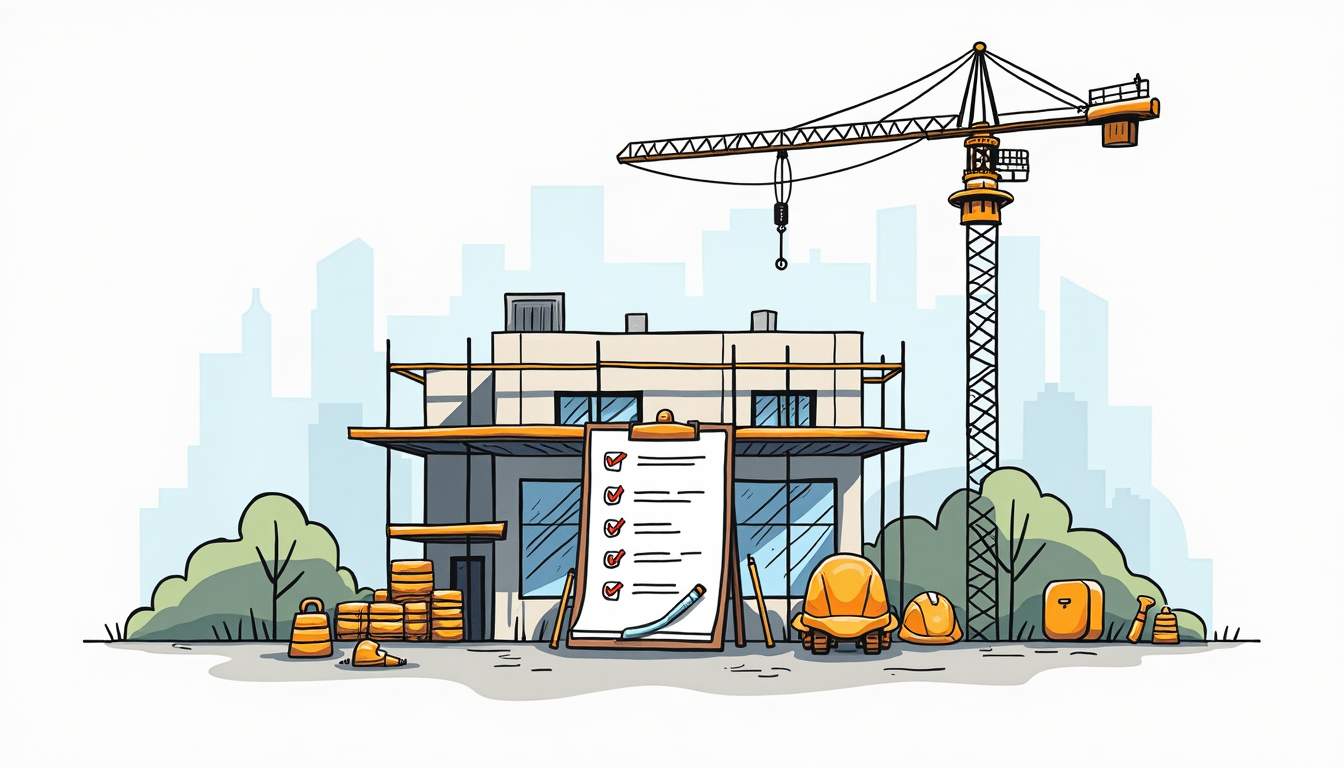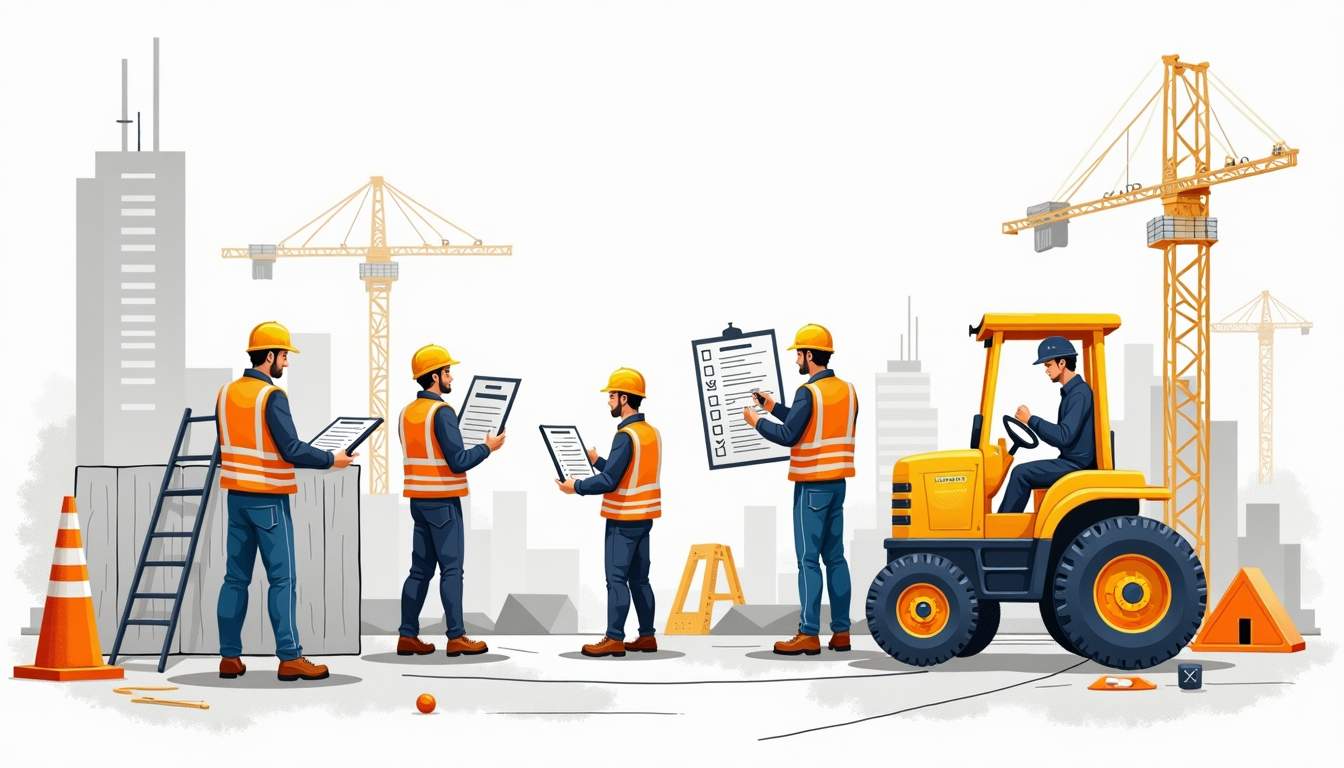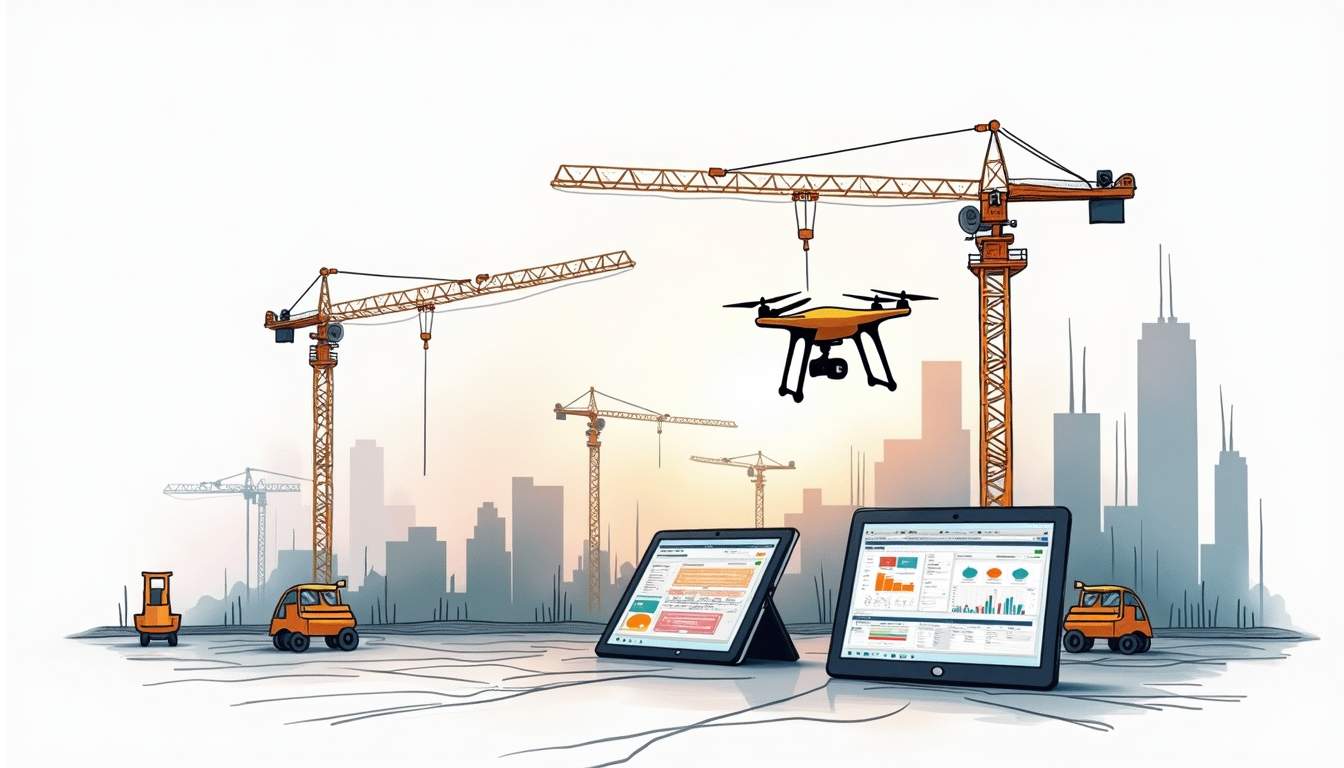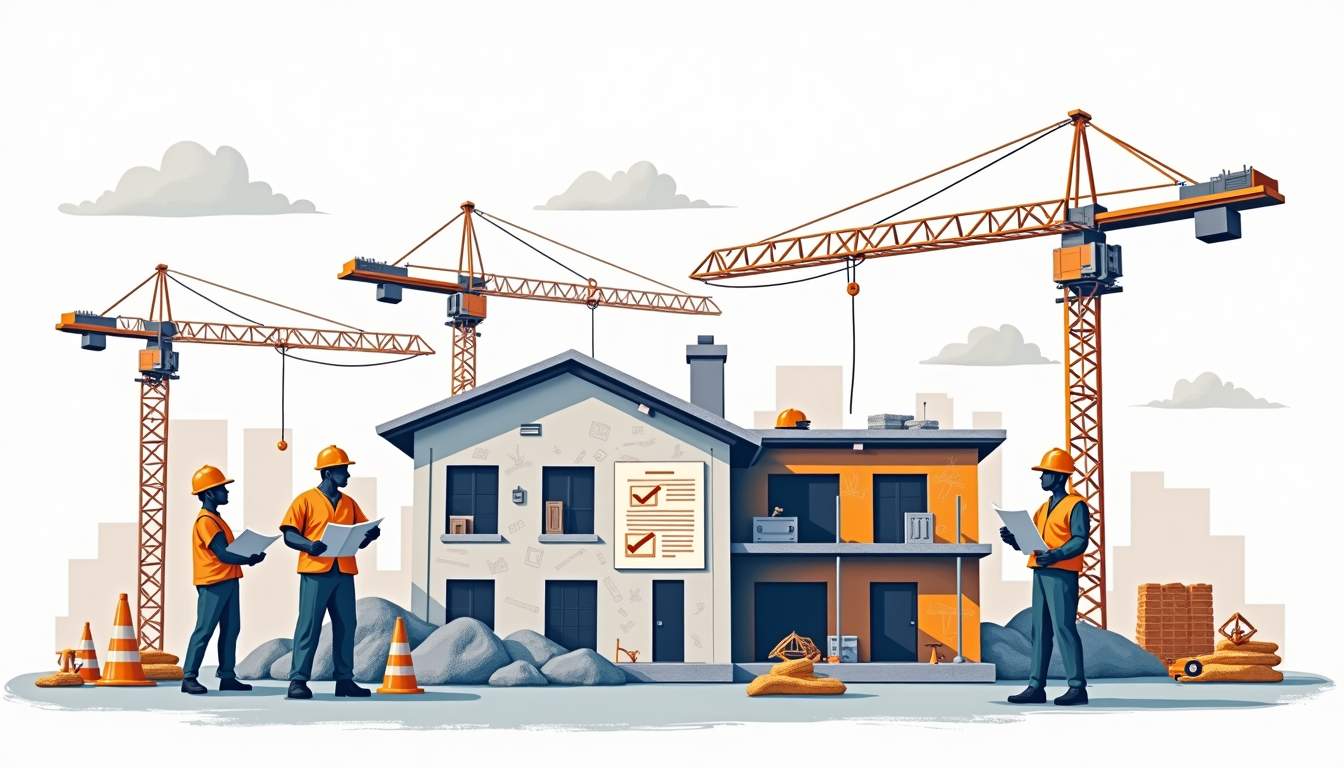
Managing a construction project is a complex, multifaceted endeavor that demands precision, foresight, and adaptability. From the initial groundbreaking to the final walkthrough, every phase requires careful coordination to maintain control over timelines, budgets, and quality standards. Without effective project management, even the most promising construction projects can spiral into costly delays, subpar workmanship, and frustrated stakeholders.
This article explores the critical components of project management during construction, focusing on strategies to keep control and ensure quality throughout the process. By understanding the key challenges and best practices, construction managers and teams can navigate the complexities of their projects with confidence and success.
Establishing Clear Objectives and Planning Thoroughly
Successful project management begins long before the first shovel hits the dirt. Establishing clear objectives and developing a comprehensive plan lays the foundation for control and quality. This initial phase is crucial as it sets the tone for the entire project, ensuring that all stakeholders are aligned and that expectations are clearly communicated from the outset.
Defining Project Scope and Deliverables
One of the first steps in construction project management is defining the project scope. This includes detailing what the project will deliver, the specifications, and any constraints or exclusions. A well-defined scope acts as a roadmap, guiding decisions and helping prevent scope creep — the gradual expansion of project requirements that can derail schedules and budgets. It is important to involve all relevant stakeholders in this process, as their insights can help identify potential challenges and opportunities early on.
Clear deliverables also provide benchmarks for quality. When everyone understands what the finished product should look like, it’s easier to measure progress and ensure standards are met. Furthermore, establishing a clear set of deliverables can facilitate better communication among team members, as it creates a shared understanding of goals and expectations. This collaborative approach not only fosters teamwork but also enhances accountability, as each member knows their specific role in achieving the project’s objectives. If you want architectural and interior design services in South West London, visit dRAW Architecture through the following link: https://www.draw-architecture.co.uk/
Developing a Realistic Schedule
Time management is crucial in construction. Developing a realistic schedule involves breaking down the project into phases and tasks, estimating durations, and sequencing activities logically. Utilizing tools like Gantt charts or Critical Path Method (CPM) diagrams can help visualize dependencies and identify potential bottlenecks. Additionally, incorporating buffer times for critical tasks can provide a safety net against unforeseen delays, ensuring that the project remains on track even when challenges arise.
Regularly updating the schedule to reflect actual progress and unforeseen changes keeps the project team aligned and enables proactive adjustments. This dynamic approach to scheduling not only helps in managing timelines but also aids in resource allocation, as it allows project managers to reassign tasks or shift resources as needed to maintain momentum. Engaging the team in these updates fosters a culture of transparency and collaboration, which is vital for navigating the complexities of construction projects.
Budgeting and Resource Allocation
Accurate budgeting is essential for maintaining control. This means not only estimating costs for materials, labor, and equipment but also including contingencies for unexpected expenses. Allocating resources efficiently ensures that the right materials and personnel are available when needed, reducing downtime and maintaining workflow continuity. It is also beneficial to track expenditures against the budget in real-time, which allows for immediate identification of any discrepancies and facilitates timely corrective actions.
Moreover, effective resource allocation extends beyond just financial considerations. It involves assessing the skills and availability of team members to ensure that the right people are assigned to the right tasks. This not only maximizes productivity but also enhances job satisfaction, as team members are more likely to thrive when they are engaged in work that aligns with their strengths and expertise. By fostering an environment where resources are managed thoughtfully, project managers can drive both efficiency and morale throughout the construction process.
Effective Communication and Stakeholder Engagement
Construction projects involve a diverse group of stakeholders, from architects and engineers to contractors, suppliers, and clients. Managing communication among these parties is vital to maintaining control and quality. The complexity of these projects often means that multiple teams are working simultaneously, each with their own set of priorities and timelines. Therefore, a well-structured communication strategy is not just beneficial; it is essential for the successful delivery of the project.
Establishing Communication Protocols
Setting up clear communication channels and protocols helps prevent misunderstandings and information silos. Regular meetings, progress reports, and digital collaboration platforms ensure that everyone stays informed and aligned on project goals and status. Utilizing project management software can streamline this process, allowing for real-time updates and easy access to important documents, which can significantly enhance productivity. Additionally, defining roles and responsibilities within the communication framework ensures that every stakeholder knows whom to approach for specific issues, further reducing the chances of miscommunication.
Encouraging open dialogue allows team members to raise concerns early, facilitating timely problem-solving and reducing the risk of costly errors. Creating a culture of transparency not only empowers team members but also promotes accountability. When everyone feels their input is valued, it can lead to innovative solutions and improvements in project execution. Regular feedback loops can also be established, where stakeholders can share their insights and experiences, contributing to a more cohesive team dynamic.
Engaging Stakeholders Throughout the Project
Active stakeholder engagement fosters trust and collaboration. Keeping clients and other key parties involved through site visits, updates, and feedback sessions helps manage expectations and ensures the project remains aligned with their vision. This engagement can take various forms, such as interactive workshops or design charrettes, where stakeholders can contribute their ideas and preferences in a collaborative setting. By involving them in the decision-making process, you not only enhance their commitment to the project but also tap into their unique perspectives, which can lead to more innovative and effective solutions.
Addressing stakeholder concerns promptly can prevent disputes and maintain a positive working environment. Moreover, establishing a dedicated point of contact for stakeholders can streamline communication and ensure that their voices are heard. This proactive approach to stakeholder management can help mitigate risks associated with project delays and budget overruns. Additionally, documenting stakeholder feedback and decisions can serve as a valuable reference throughout the project lifecycle, providing clarity and continuity as the project evolves. By prioritizing engagement and communication, teams can navigate the complexities of construction projects more effectively, leading to successful outcomes that satisfy all parties involved.
Quality Control and Assurance Practices
Maintaining high quality throughout construction requires a systematic approach to monitoring and verifying work against established standards.

Implementing Quality Management Systems
Quality management systems (QMS) provide a structured framework for defining quality policies, procedures, and responsibilities. Adopting standards such as ISO 9001 can help formalize processes and promote continuous improvement.
Documenting inspections, test results, and corrective actions creates a traceable record that supports accountability and transparency.
Conducting Regular Inspections and Testing
Routine inspections at various stages of construction catch defects early before they escalate. This includes verifying materials, workmanship, and adherence to design specifications.
Non-destructive testing methods and third-party inspections add an extra layer of assurance, helping to identify hidden issues that might compromise structural integrity or safety.
Training and Empowering the Workforce
Quality is directly influenced by the skills and commitment of the workforce. Providing ongoing training and clear quality expectations empowers workers to take ownership of their tasks.
Encouraging a culture of quality where every team member feels responsible for the final outcome fosters pride and diligence in their work.
Risk Management and Problem Solving
Construction projects are inherently risky, with potential challenges ranging from weather delays to supply chain disruptions. Effective project management anticipates and mitigates these risks to maintain control and quality.
Identifying and Assessing Risks Early
Risk management begins with identifying potential issues that could impact the project. This includes technical challenges, environmental factors, regulatory compliance, and financial uncertainties.
Assessing the likelihood and impact of each risk helps prioritize mitigation efforts and allocate resources accordingly.
Developing Contingency Plans
Having contingency plans in place ensures the project can adapt quickly when problems arise. This might involve alternative suppliers, flexible scheduling, or additional budget reserves.
Regularly reviewing and updating these plans keeps the team prepared for unexpected events.
Problem-Solving and Decision-Making Processes
When issues occur, a structured approach to problem-solving helps resolve them efficiently. This includes gathering facts, analyzing root causes, brainstorming solutions, and implementing corrective actions.
Empowering team members to make decisions within their areas of expertise accelerates responses and keeps the project moving forward.
Leveraging Technology for Enhanced Control and Quality
Modern technology offers powerful tools to streamline project management and improve quality control in construction.

Project Management Software
Digital platforms centralize scheduling, budgeting, document management, and communication. This integration reduces errors, improves transparency, and facilitates real-time monitoring of project status.
Features like automated alerts and mobile access keep teams informed and responsive, even when working on-site.
Building Information Modeling (BIM)
BIM technology creates detailed 3D models that integrate architectural, structural, and mechanical information. This visualization helps identify design conflicts early and improves coordination among disciplines.
By simulating construction sequences and logistics, BIM supports better planning and quality assurance.
Quality Monitoring Tools
Technologies such as drones, laser scanning, and IoT sensors enable precise and efficient quality inspections. These tools can detect deviations from specifications, monitor environmental conditions, and track equipment performance.
Data collected supports informed decision-making and continuous improvement.
Conclusion
Project management during construction is a dynamic balancing act that requires vigilance, communication, and adaptability. By establishing clear objectives, engaging stakeholders, enforcing rigorous quality control, managing risks proactively, and embracing technology, construction teams can maintain control and deliver high-quality outcomes.

Ultimately, the success of a construction project hinges on the ability to integrate these elements seamlessly, ensuring that every phase contributes to a safe, efficient, and satisfactory completion.

